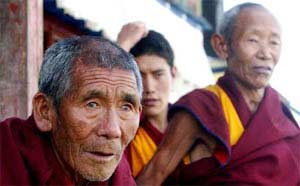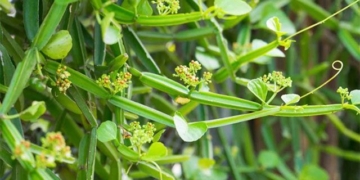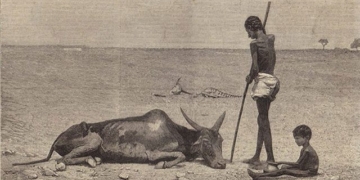Sunrise is the most beautiful time to admire the Tashilhunpo Monastery. The light shines through the tiles, highlighting the monastery against the dark backdrop of Mount Shunyi, adding to the mystique of this monastery located in Xigaze, the former capital of Tibet and now the second-largest city in Tibet after Lhasa.
 Founded in 1447, the monastery has developed over the centuries and now covers an area of 18.5 hectares with over 50 intricately carved halls and 3,600 rooms designated for the Lamas.
Founded in 1447, the monastery has developed over the centuries and now covers an area of 18.5 hectares with over 50 intricately carved halls and 3,600 rooms designated for the Lamas.
The Living Buddha, Chiazha Qamba Chili, stated that the monastery once housed up to 3,800 Lamas, but now only 780 remain. This 52-year-old abbot has been recognized as the Living Buddha since he was 7 years old. The title of Living Buddha is the highest rank a Lama can achieve. When a highly revered Lama passes away, it is believed that he will reincarnate as another child.
Chiazha lives in a two-room brick house supported by wooden pillars, with a beautifully polished earthen second floor. Despite growing up in the monastery, Chiazha is familiar with modern aspects: he uses a Flying Fish typewriter with Tibetan script, wears ties, and sports jackets.
He is a devoted Lama involved in religious duties and the administration of Tashilhunpo Monastery. His most pressing responsibility is to find the reincarnated child of the 10th Panchen Lama, who passed away from heart disease in 1989.
The 780 Lamas at the monastery, aged between 17 and 87, are rigorously selected through examinations from all over regions such as Tibet, Inner Mongolia, and provinces like Yunnan, Guizhou, and Shandong in China. Life in the monastery is very austere; the Lamas rise at 6 AM to gather in the prayer hall for Sutra recitation and breakfast.
 |
|
Lamas at the Monastery |
From 9:30 AM until noon, they either work or attend classes. After lunch and a short rest, they must either work or return to class. In the evening, they read Sutras and eat porridge from 6 to 8 PM. The food is very simple, primarily consisting of tsampa (roasted barley flour) and yak butter tea. Lamas are prohibited from smoking and drinking alcohol.
The annual income of the entire monastery is approximately 1.6 million Yuan (about 540,800 USD), with 1 million Yuan coming from agricultural products, 100,000 Yuan provided by the Chinese government, and 500,000 Yuan from religious services. Each Lama receives an average of 80 Yuan per month, with older Lamas receiving up to 160 Yuan and newcomers receiving 45 Yuan.
The monastery is a labyrinth of many dark rooms, narrow corridors, and shadowy courtyards. There are numerous Buddha statues in the prayer halls. In the northeast corner of the monastery, there is a wall covered in incense offerings. The Lamas hang a massive silk tapestry along the wall depicting the Buddha. Each day, they change the tapestry to feature the Buddhas of the Past, Present, and Future.
In the northwest is a dark red building housing the largest bronze statue of Avalokiteshvara in the world, standing 26.2 meters tall and weighing 115 tons. The statue is adorned with pearls, agate, coral, and gold and silver. The finest craftsmen in the country worked for a year to carve the statue. Various paintings depicting the life of Siddhartha Gautama and Zongkaba (1358-1419), the founder of the Tibetan Buddhist school, hang around the statue.


















































